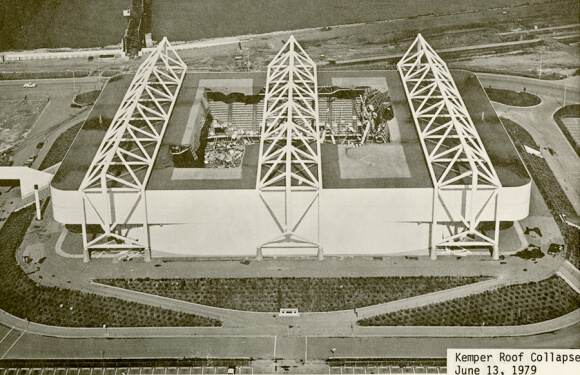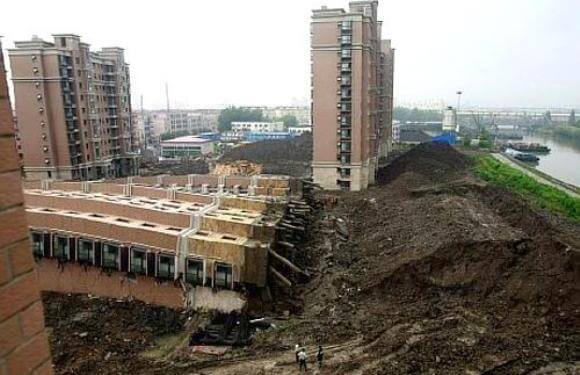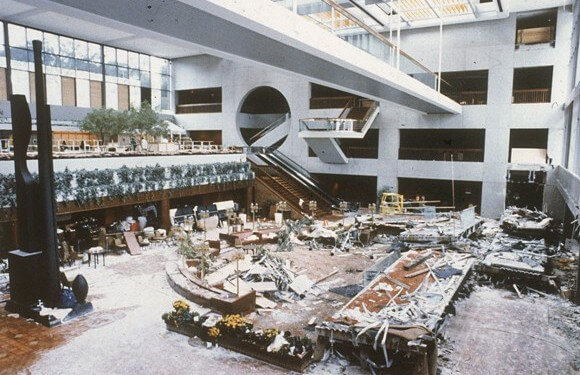Introduction
Structural failures are a result of many causes that need to be analyzed and studiedbefore allowing the occupants to live. These appear because of the lack of proper care while construction of buildings. Whenever a small crack appears, this eventually goes on enlarging itself unless treated by structural engineers. For prevention, it is advised to keep vigilance and strict supervision or inspection from time to time by experts to avoid any kind of accidents. There are some instances where the quantity is given importance over quality on construction sites. This is because money is mostly the governing factor at sites which effects the quality. At first, the work may seem to be perfect without any appearance of failure, but when time goes by, the real problem starts to show up. Some preventive measures are taken to repair such failures, but it is better to take preventive measures at site than after damage to the buildings.
Causes of failure
There are many causes that contribute towards failure of the structure, some of which are –
- Failure in design – No engineer designs imperfectly, but there are some criteria in design which need some attention. Engineers tend to avoid over reinforcing the concrete as in over reinforcement, the structure fails suddenly and is quite brittle. Therefore, they opt for under reinforcement as the structure fails by yielding and is quite ductile, which gives sufficient time to engineers for taking precautionary measures or vacating the building. Some nondestructive testing methods can also be used like Rebound Hammer Test, Ultrasonic Pulse Velocity, and so on.
- Failure by improper curing –Many times cement hydrates frequently as in case of hot weather concreting. Moreover, a similar case is experienced in cold weather concreting where the water is at freezing temperature. In such cases, some extra measures have to be taken like change in cement type i.e., rapid hardening in hot weather. Other measures include the use of steam curing in cold weather, concreting for quick hydration procedures, and the use of wet gunny bags, polyethenes or ponding immersion, etc. for hot weather, concreting so as to trap moisture in concrete.
- Failure due to improper compaction – If insufficient compaction is there, then voids are developed in the concrete that doesn’t facilitatethe binding of cement to aggregates. Vibration is more effective than manual compaction using manpower as there exists a consistency in compaction by machines which is missing in manpower due to fatigue.
- Failure in steel – This type of failure is common as many times; the steel becomes corroded due to contact with moisture. It is indirectly related with compaction as proper compaction can protect the steel from corroding. Apart from this, other causes may include insufficient welding, problems during erection, loose connections, and so on. For more strength, high grade of steel can be used like Fe 500, Fe 550, etc. Moreover, large number of small diameter bars are highly recommended to prevent structural failures.
- Failure due to soil condition –At times, liquefaction occurs that leads to tilting or immersion of buildings below ground level. This can happen when very to the place of structure, a construction of another building is taking place as in the case of Leaning Tower of Pisa, or it can happen when the structure is constructed in the soft layer of soil. This has to be checked before the construction of any structure as preventive measures can be quite costly. Hence, soil condition has to be tested thoroughly before starting construction work.
- Failure due to natural calamity – This type of failure is unavoidable as it comes uninvited. Causes of such failure are earthquakes, hurricanes, tsunami, volcanic eruption and so on. For seismic design considerations, some codes are given like IS 13920:2016 Ductile Design and detailing of reinforced concrete structures subjected to seismic forces and IS 1893:2016 criteria for Earthquake Resistant Design of Structures – Part 1: General Provisions and Buildings for safe design of structures under earthquake. Different countries have their own building codes to safely design as per the calamity and so it is recommended to follow to prevent structural failures.
Some Famous examples of structural failure
Kemper Arena in Kansas City– The roof of the arena broke down during a heavy rainstorm. The design included a temporary reservoir to reduce storm water runoff from the roof, but it only had eight drains that violated the local code that mentioned at least eight times as much. Due to this, the reservoir could only sustain 2 inches of rain before overflowing. One night, the roof collapsed and it was so violent that pressure from the roof falling blew out some of the walls.

Fig 1: Roof collapse in Kemper Arena
Courtesy: Kansas City Magazine
Lotus Riverside Complex, China – A newly built, vacant apartment building collapsed that killed a worker on site. Investigations led to the discovery that depositing excavated soil on a nearby river bank caused instability in ground conditions that led to building collapse.

Fig 2: Failure of Lotus Riverside complex
Courtesy: Top Five Buzz
Hyatt Regency Walkway Collapse, Kansas City– When two walkways at the Hyatt Regency hotel in Kansas City fell four floors into the lobby below where a dance competition was being held, it led to the killing of 114 people were killed and injured 200 people. It was considered one of the deadliest structural collapses in US history until the 2001 World Trade Centre attack. Investigation led to the discovery that due to last minute changes in the design of the walkway (the tie rods and support beams were forced to hold the weight of both the second-floor walkway and the fourth-floor walkway), it added too much weight for the ties and beams to hold.

Fig 3: Hyatt Regency Walkway Collapse
Courtesy: Timeline
Conclusion
Building failure is a serious matter that must not be overlooked and efforts must be made to make the building safe for occupants by proper planning and design. Last minute changes must be avoided and any failure in the structure must be treated immediately. Preventive measures are always effective than remedies and so the civil engineers must opt for safe design always.
References
- Concrete Civil, “The Top 10 Construction Failures of The World”- https://concretecivil.com/the-top-10-construction-failures-of-the-world/
- Designing Buildings Wiki, “Building failure”- https://www.designingbuildings.co.uk/wiki/Building_failure
- Civil Engineers PK, “Failure Types in a Building”- https://www.civilengineerspk.com/failure-types-in-a-building/
If you have a query, you can ask a question here.


